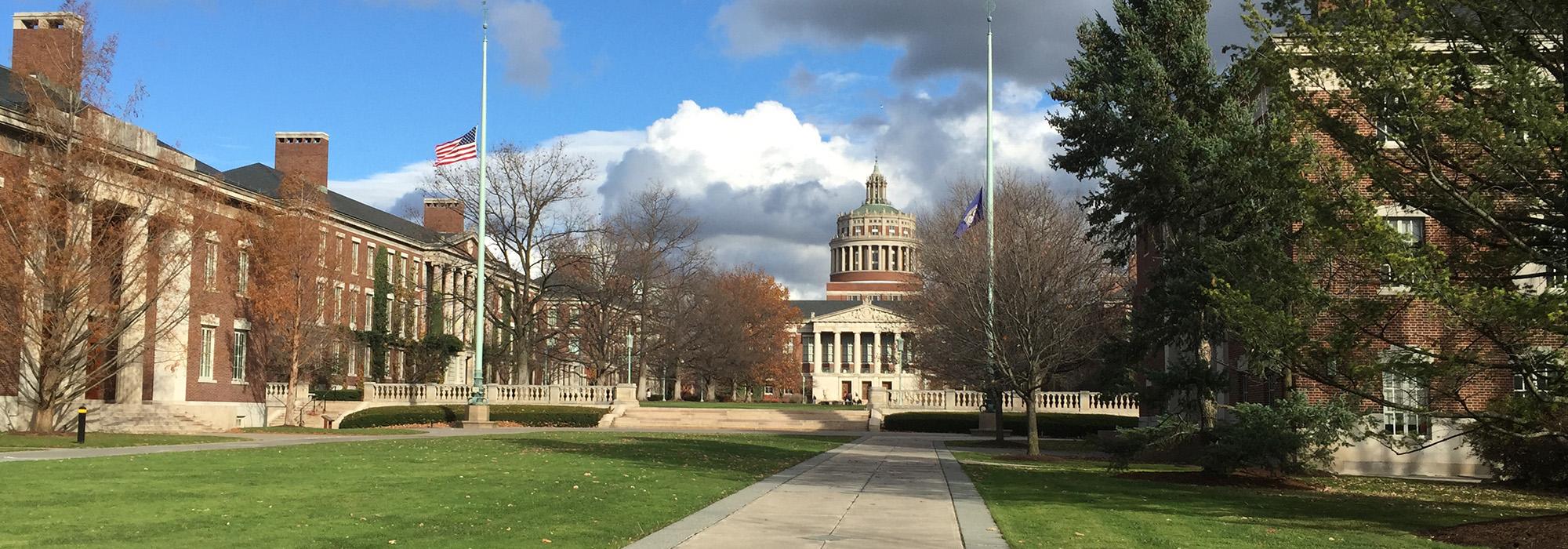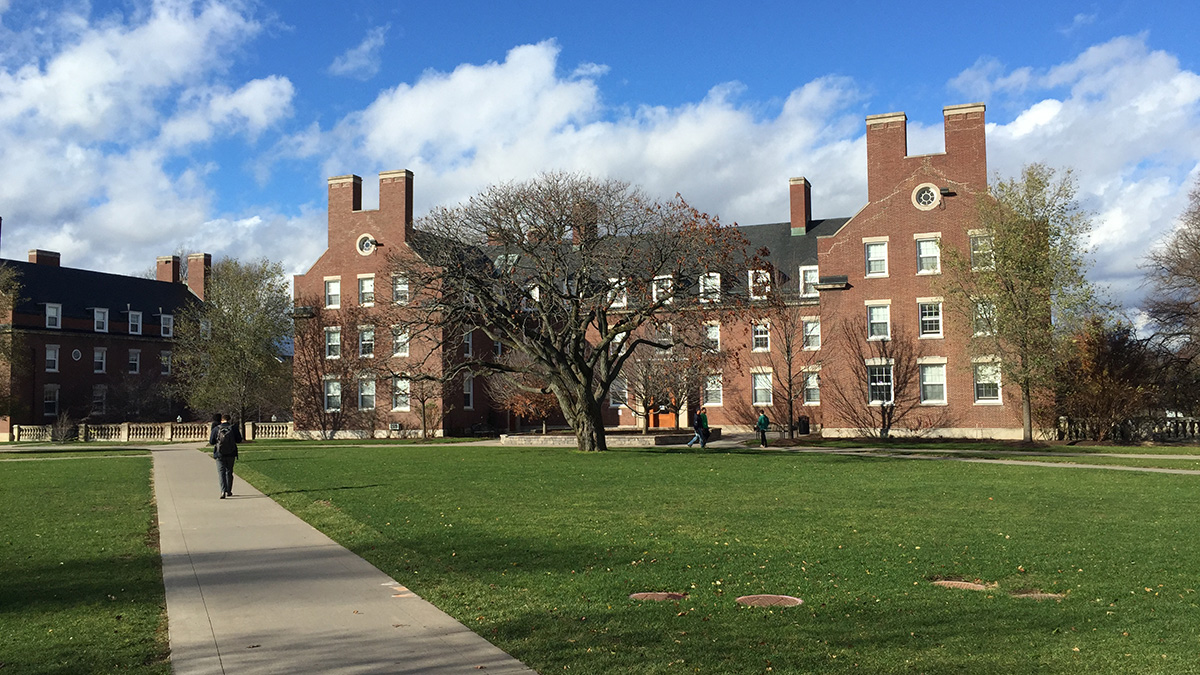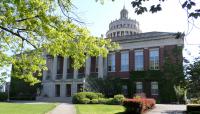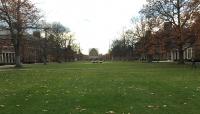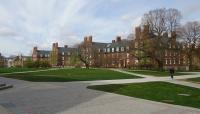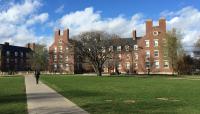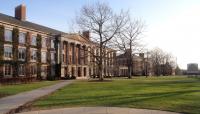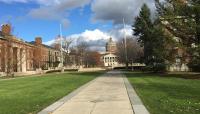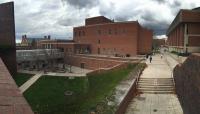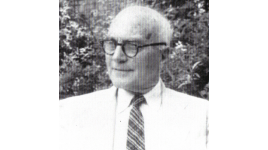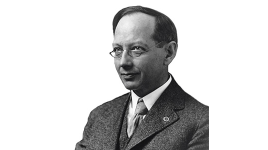Landscape Information
The Hamilton Literary and Theological Institution founded this university in 1850. After the university outgrew its campus in downtown Rochester, the school purchased the grounds of the Oak Hill Country Club for the development of a new campus in 1923. The university subsequently hired architect Charles Platt, the firm Gordon & Kaelber Architects, and the landscape architecture firm Olmsted Brothers to create a campus plan. Frederick Law Olmsted, Jr., and his associates Edward Whiting and Faris Smith, helped develop an academic sanctuary that provided views of the Genesee River and reflected the city’s strong horticultural tradition. The realization of the plan began with the development of Eastman Quadrangle in 1927, a terraced lawn segmented by symmetrical concrete crosswalks and framed by rows of oak and elm trees. The quadrangle terminated at a monumental granite staircase that descended onto a lower terrace containing large flagpoles and providing views across the river into Genesee Valley Park. The campus expanded on a northwest-southeast axis with a series of quadrangles and courtyards surrounded by Greek Revival architecture. Tree plantings framed the outdoor rooms and were placed informally across the outlying grounds. A pre-existing riverwalk designed by Frederick Law Olmsted, Sr., was integrated into the campus grounds. In 1999 portions of the campus were established as the University of Rochester Arboretum.
Bound between Mount Hope Cemetery and a prominent bend in the Genesee River, the 600-acre campus has preserved much of the Olmsted Brothers original design. New quadrangles and intimate garden courtyards have slowly replaced open ground as the institution has expanded. Plantings of more than 1,400 trees representing 116 species link the riverside campus to the University’s neighboring properties, including the Medical Center campus and the Mount Hope campus. The arboretum consists of eight gardens and plant collections, such as the Hillside History Garden and the Magnolia and Lilac Collections. Bordering the campus along the riverbend is Olmsted’s Riverwalk, now the Bausch & Lomb Riverside Park, and a canal trail that serve as a riparian buffer.



